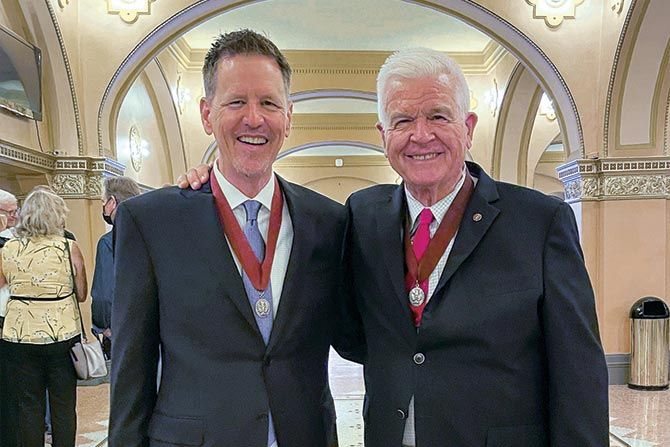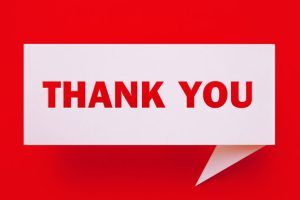Kevin Miller, FAIA, is the president and CEO of GSBS Architects and recently became a Fellow of AIA. Kevin started working at GSBS in 1988 after earning his master’s degree in architecture at the University of Utah College of Architecture + Planning.
AIA Utah interviewed Kevin about his life, career, the importance of having a membership in AIA Utah, the award ceremony and some of his favorite projects.
Kevin Miller is a Utah native who grew up in Olympus Cove. He left Utah after high school to attend a private liberal arts college in California that is now called Claremont McKenna College. Kevin spent two years in California. Although he thought he might become a lawyer, he had trouble deciding what to do professionally. “I know a lot of attorneys, especially those who focus on construction law,” he said. “The way their brains work is fascinating, but I am doing the right thing. My interest in the legal aspects of architecture is an outgrowth of my interest in the law, but I would not have enjoyed practicing law the way I enjoy architecture.” His parents suggested that he attend the University of Utah until he figured out his direction.
At that point, Kevin was a college junior. He wanted to take Introduction to Architecture as his Fine Arts prerequisite. The class was full, so he asked what else was available and signed up for a three-class series called Basic Design. The first class was about black and white, the second was about color, and the third was about 3D. “I thought the series sounded like a good idea even though it was a big commitment. It was a bit by chance that I took it, but it lit my fire and has given complete form to my life professionally,” said Kevin. “I wasn’t convinced I could be an architect until that series changed my mind.”
Kevin got involved in AIA Utah as a student, serving as AIAS President in his final year of graduate school. He was also a student member of the Salt Lake City R/UDAT (Regional/Urban Design Assistance Team) that occurred in the spring of 1988. R/UDAT is a public service program of the national AIA. It is “a results-driven community design program” based on the principles of interdisciplinary solutions, objectivity and public participation. The program combines local resources with the expertise of a multidisciplinary team of nationally recognized professionals who volunteer their time to identify ways to encourage desirable change in a community. The recommendations of the 1988 Salt Lake City R/UDAT resulted in the policy changes that led to the development of Salt Lake’s near-west side, including the establishment of an Arts and Entertainment District, what became the Gateway Mall, and ultimately the Granary District. Like everybody else in graduate school, he also took Pro Practice. Craig Coburn taught him (and sent him a note later to congratulate Kevin when he was elevated to Fellow).
When Kevin graduated, the U.S. was coming to the end of a recession, and jobs were difficult to come by. Kevin had interviewed and dropped off his resume at different companies but says he “could not find a gig.” However, he knew Stephen Smith of GSBS “from a previous life,” and participating in AIA Utah as a student allowed him to become acquainted with other GSBS principals: David Brems and Mike Stransky. They offered him a job when he was getting ready to graduate, and Kevin has been at GSBS ever since.
After Kevin joined the firm, he found that everyone eligible was expected to join AIA. GSBS encouraged AIA involvement with time, money and moral support.
Three months after he arrived, GSBS laid off 12 people. “I hoped they kept me because I was intelligent, working hard and doing well,” said Kevin, “but now I recognize that I was probably the cheapest guy in the room.” However, the layoff created opportunities for those who remained. They had been a middling-sized firm before the layoff, and now they were small enough that everyone did much more of everything. Kevin found he was exposed to different aspects of the practice and had the opportunity to take on responsibility. The firm has grown since then, but Kevin still benefits from the understanding he gained of the company, its culture and everything that makes GSBS what it is.
Although Kevin was initially an associate, he could finally call himself an architect and put AIA after his name when he got his license. “That was a moment of arrival,” said Kevin. “It’s what you strive for. And now, being able to put FAIA after my name is humbling. I am pleased and proud about it.”
For the first couple of years after Kevin was hired, he worked directly with all four primary principals and three or four other senior architects. This opportunity occurred because the company values mentoring and also because of GSBS’s size. Abe Gillies, another principal, was an especially important mentor to Kevin because they saw the world the same way. Abe was a wise and knowledgeable man. He made time for Kevin, brought him along, counseled him, and put him in situations where he could grow. “I hope my actions live up to what Abe did when he was here,” said Kevin. Mike Stransky and Stephen Smith also invested their time in Kevin. “Virtually everybody I interact with has influenced how I look at and practice architecture,” said Kevin. “They helped shape the architect that I am now.”
Kevin became a shareholder in 1998. Of the founders who hired him, David Brem is the only one who is still an active practitioner, design principal and board member. The other three have retired.
Kevin thinks AIA membership is important for several reasons. The relationships he built as a student helped him secure a job after he graduated, but Kevin also sees AIA as the vehicle by which architects enhance their profession. “Even though we all compete daily, there is a big picture responsibility to make the world better and improve it for architects, too,” he said. “Architects are not historically great at self-promotion, and the way we are valued is not commensurate with our contributions. AIA is an important vehicle to change that situation.”
Kevin found his place in AIA on the national level. “I was engaged in my career and relatively introverted,” said Kevin. “I didn’t have much involvement because AIA didn’t seem like my cup of tea. But agreements, and the underlying structure of how they were held together, interested me. My former boss and partner, Mike Stransky, got me on the documents committee in 2008. I didn’t know he applied for me until I received a congratulatory email.”
There are 24-34 members on the contract documents committee, depending on where the committee is on the cycle of document redrafts. “We have very similar interests, and we became friends,” said Kevin. “There are usually a certain group of people in a practice who are interested in contracts. But when they are interested, they are really interested. Those are the ones who do well on the committee.”
One of the committee leaders asked Kevin to speak at a New Orleans convention. “I thought it would be good for me, and it was, but it was also hard,” said Kevin. “I’ve made presentations about risk management and contracts more than 30 times. I was more comfortable after 30 presentations, even though speaking was still tricky. Enthusiasm overcomes introversion. It is easy to talk when I am passionate about the subject, and I have a great deal of passion for helping practitioners practice in better ways and manage their risk.”
There are six objects of nomination for AIA Fellows. Kevin was made a fellow because of Object Three, which has to do with leadership within the institute. “My contributions to the contract documents program influenced the construction industry,” said Kevin. “The assignment is usually a 10-year hitch, but they held me over for 14 years. I was the chair in 2015 and 2016 while we were doing the run-up to the 2017 document release.“
The pandemic made it impossible to have an FAIA ceremony for two years. Although some people were elevated to fellowship, they had no convention, ceremony or investiture. The medal came in the mail. When AIA was able to have a convention again, the FAIA awards ceremony was held in the historic Auditorium Theatre in downtown Chicago with its great acoustic space. “It’s a pageant,” said Kevin. “We had robes and medals and lots of handshaking. My wife and two of my three adult children made the trip out to see it. Mike Stransky and his wife also came to celebrate, as did current and former partners and their spouses. It was really something, and I am at a loss for words to describe it except to say it was fabulous and very humbling. You look around the room at the other people with their lists of accomplishments and wonder what on earth you are doing there. Compared to them, working on some contracts for 14 years doesn’t seem like that big a deal, but maybe they look at me and feel the same way about what I did.”
Kevin knows most of the 23 current practicing or emeritus AIA Fellows in Utah, including GSBS’s Mike Stransky, David Brems and Stephen Smith. “They set the standard for what AIA involvement at this firm ought to be,” said Kevin. “But my involvement is at the national level and has been for nearly 15 years. I found my niche working on documents. As a result, many of the Fellows I know are around the country. A lot are involved with the documents committee and ultimately become Fellows as well.”
As president of GSBS, Kevin does less architecture than he used to, but he is proud of the work he did on the speedskating oval for the Winter Olympics. He has also worked on many public safety buildings and done a lot of justice facility work, including the new state prison. “When you work on jails, courthouses and police work, the work is often focused on negatives: housing and punishment. The new prison has been an opportunity to move the needle on how justice works, and we think that project has a good chance of positively changing the lives of people who are there. We’ve designed it to encourage positive change. That is a big deal to me because our justice system is not working. The recidivism rate is more than 80%. We need to find a different way of impacting people so that breaking the law is not such common behavior.”
As Kevin finished the interview, he said, “I live by the philosophy that you are not allowed to complain unless you are willing to invest in changing the situation. The way we can solve problems is through the AIA. Our profession will only improve if we invest in it, our projects and our practices.”






